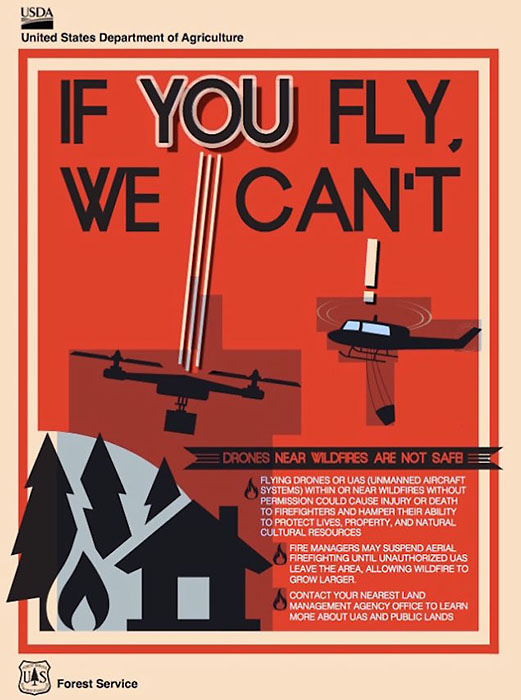There are a million ways people might use drones in the future, from deliveries and police work to journalism. But in this episode, we’re going to talk about consumer drones — something that you or I might use for ourselves. What does the world look like when everybody with a smart phone also has a drone?
There are loads of people thinking about the future of drones, but one of my favourite drone projects is something called the Drone Aviary that a design practice called Superflux released in July. And two of our guests this week, Anab Jain and Tim Maughan, worked on that project. They imagined ten different applications for drones in everyday life — everything from a drone that directs traffic, to a surveillance drone, to an advertising drone that uses facial recognition to detect your identity, and then project targeted ads at you in midair. Here’s a little video they produced:
The ten drones they built were simply experiments, but they’re so plausible that Jain says they got a few emails from people asking how they could buy or invest in the drones described here. One of the drones they imagine in this piece is the selfie drone. Instead of a selfie stick, you have a little drone following you around, trained to your face (and your friends faces if you’re not a pure narcissist) that captures your life as you live it. If you’re interested in how that might play out, there’s a cool short story by John Crowley called Snow that takes that idea to the logical extreme.
This week’s episode starts with two advertisements for personal drones — one to take photos of yourself and your friends, and one to track your child as they go to and from school. But in reality, what will probably happen is that instead of buying a bunch of individual purpose drones — one for selfies one for tracking your kid, etc. — you’d buy one drone, and that drone would have apps on it, just like your smart phone.
And when you start to think about apps for drones, it’s not hard to come up with a whole bunch of ideas. Tim Maughan, who worked on the Superflux project with Jain and who’s also a journalist and science fiction writer, listed a couple in the episode: an app for tracking your cat, so you can watch it while you’re at work; an app for keeping an eye on you while you bike, and letting you know of dangers you might not be able to see; an app for watching your car, in case you get in an accident and need to prove what happened.
But, just for a second, imagine that everybody with a smart phone has a drone. That might work just fine in, say, Rabbit Hash, Kentucky or New York Mills, Minnesota. But now try to imagine what it would look like if every person with a smart phone in New York City, or Chicago or Boston was also being followed by a drone. You’d be constantly surrounded by a swarm of drones. So somehow, someone needs to figure out how to regulate drone traffic.
Legally, in theory, everybody in New York City, or Chicago, or Boston could have a drone with them, says Ryan Calo, a law professor at the University of Washington who specialises in the legal issues surrounding robots and drones. In the episode, he explains that unlike most things which are allowed unless there’s a law against it, drones are considered aircraft by the FAA and thus illegal with some exceptions. One of those exceptions is for hobbyists. But under the hobbyist exception there are few important rules. Things like: the drone has to stay below 400 feet, and the operator of the drone has to be able to see the thing she’s flying at all times. Which makes a lot of applications, in which a drone operates on its own, impossible.
But Calo says that this way of regulating drones can, and probably will change in the future. You’ll have to listen to the episode to hear why hot air balloons are a good historical precedent for drones.
So our future might be full of rules and regulations and laws about when and where and how we can use drones, or which apps are legal in which settings. Already there are some problems with drones flown by hobbyists, most notably in recent cases in California where firefighters have had to call back planes because of drone activity. They feared their planes would collide with the drones and take down the plane, possibly killing the pilot. The situation lead to one of my favourite recent posters, made by the USDA, that truly reminds us that the future is now:

For more on our drone filled future, listen to the podcast!
Also, I’m trying to take a little survey of listeners to learn what they do and don’t like about the show. So if you have a minute to fill out this (very short) survey, that would be awesome.
That’s all for this future, come back next week for a new one.
Illustration by Tara Jacoby
